

The magazine of the photo-essay

May 2018 issue


“A free, really high quality photo-essay magazine. Fabulous!”
Stephen Fry. British actor, writer and film maker
by Gary M Jones
Vientiane’s roads are among the most dangerous in Asia, but a volunteer emergency service, manned largely by
young people and students, offers a lifeline. Gary Jones reports for duty with the city’s “saviours of the streets”.
Laos is one of the poorest countries in Asia. Its capital city Vientiane, however, is booming, and newfound prosperity has
resulted in a torrent of shiny sedans and muscular SUVs, even the occasional luxury Bentley, cruising its streets.
They are joined by tens – possibly hundreds – of thousands of motorbikes and scooters.
The bone-crunching downside to the city’s success is a perfect storm of endemic drink driving, rare use of crash helmets,
poor vehicle and road maintenance, and virtually no traffic-safety education or enforcement of the law. Vientiane has
one of the most appalling road-fatality rates in Asia – roughly 20 times that of Hong Kong. Making matters worse is the
tragically inadequate healthcare system in Laos, with no public ambulance service that is affordable for most pockets.
Fighting back against the carnage is Vientiane Rescue, whose volunteers are praised as miracle-working “saviours of the
streets”.
Free of charge and operating around the clock, Vientiane Rescue is an independent emergency and first-responder
service. Set up in 2011 by Frenchman Sébastien Perret, formerly a schoolteacher and part-time firefighter in Paris, it has
grown from just a handful of dedicated individuals (who once slept by roadsides, praying that, when emergency calls
came, they would have enough cash to put fuel into their makeshift ambulance).
By 2016, when these pictures where taken, Vientiane Rescue had 200 volunteers, four emergency response stations
across the city, eight ambulances, a fire truck, a scuba-rescue team (the city is on the Mekong River) and hydraulic “jaws
of life” equipment for cutting trapped passengers from mangled vehicles – all operating on a tiny budget of just US$6,000
a month, mostly donated by the public.
In 2015 alone, Vientiane Rescue responded to 5,760 emergencies. Most astonishingly of all, the majority of Vientiane
Rescue volunteers are students and young people aged 16 to 25. All work for nothing. In 2016, the youngest in the
team was just 12 years old.
Since these pictures were taken, Vientiane Rescuce has also started operating in Laos’ second largest city, Pakse. Its total
number of volunteers now tops 400. Weekends are always busy for Vientiane Rescue, and I joined Perret and the Nong
Hai Village emergency response station team for the 6pm-2am shift on a Saturday night. The station is a repurposed, 14-
metre-long shipping container positioned beside Boulevard Khamphenmeuang, a major road leading to neighbouring
Thailand that is notorious for speeding.
While we waited for the first of many emergency calls that evening, a flag – announcing Vientiane Rescue’s hotline
number, 1623 – flapped noisily beside the road with every speeding truck that bundled by.
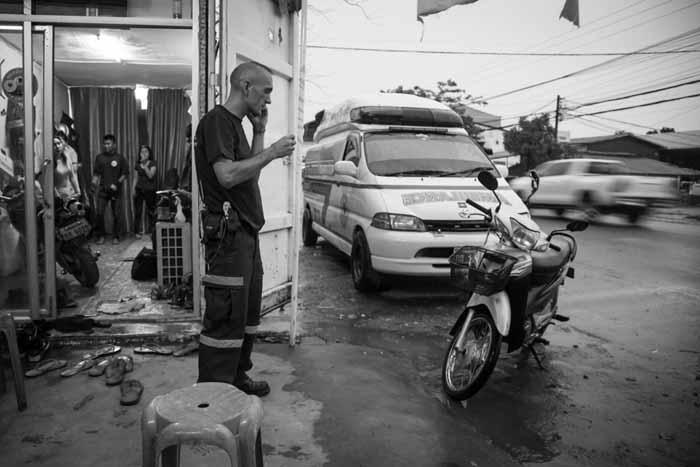
French paramedic Sébastien Perret, the driving force behind Vientiane Rescue, talks on his phone with one of his
volunteers outside the emergency response station at Nong Hai Village.
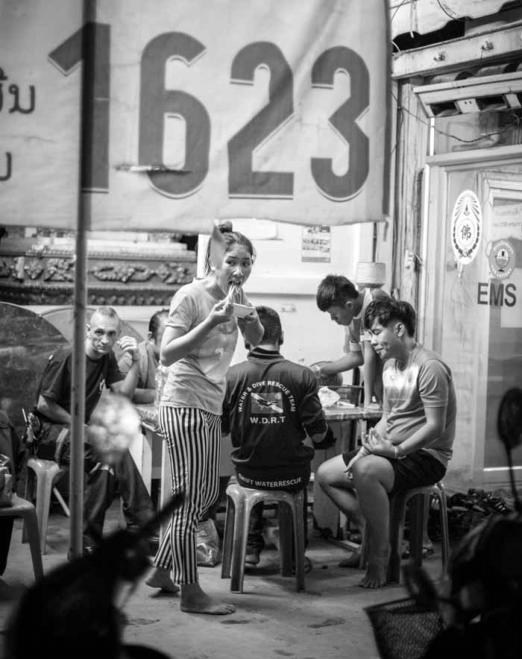
Perret and Vientiane Rescue volunteers share food while awaiting call outs on a Saturday
evening.
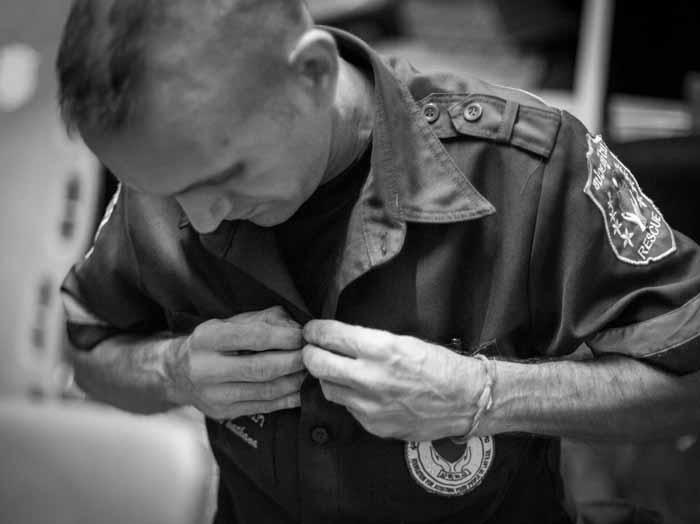
Perret kits up for the evening’s shift.
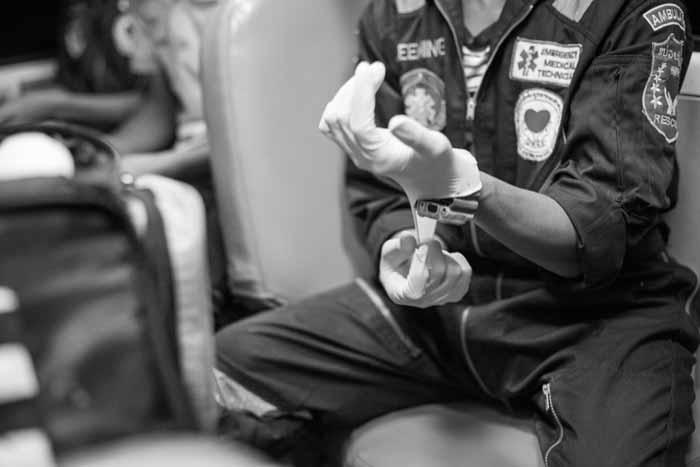
Volunteer Leeming, a 17-year-old student, gloves up inside a station ambulance.
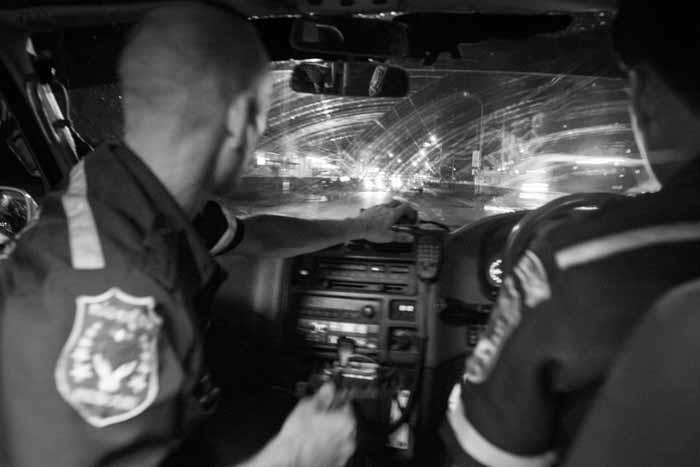
Perret sits up front as the ambulance races towards the scene of a serious road accident.
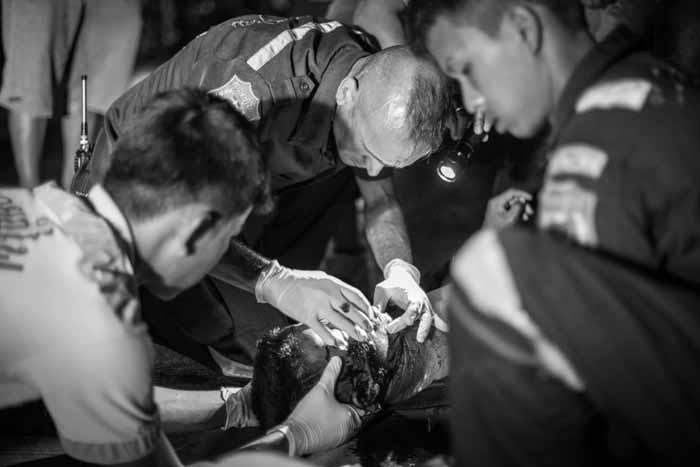
Perret (centre), Leeming (right) and a colleague assess the injuries of an unconscious motorcyclist who has crashed at
speed into a parked van.
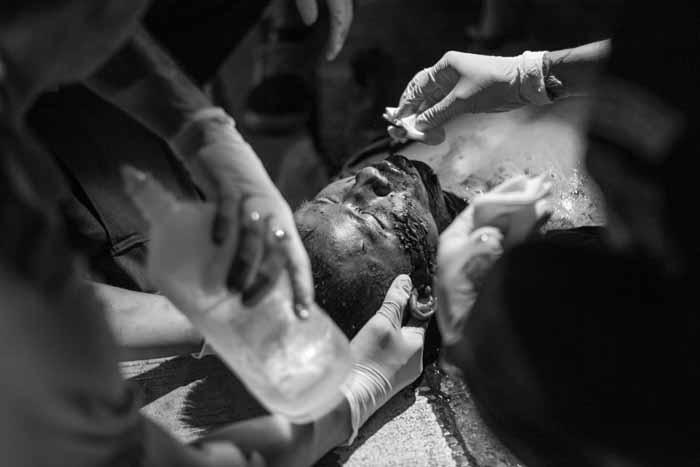
Blood oozing from the man’s right ear suggests cranial trauma, says Perret, possibly a fractured skull.
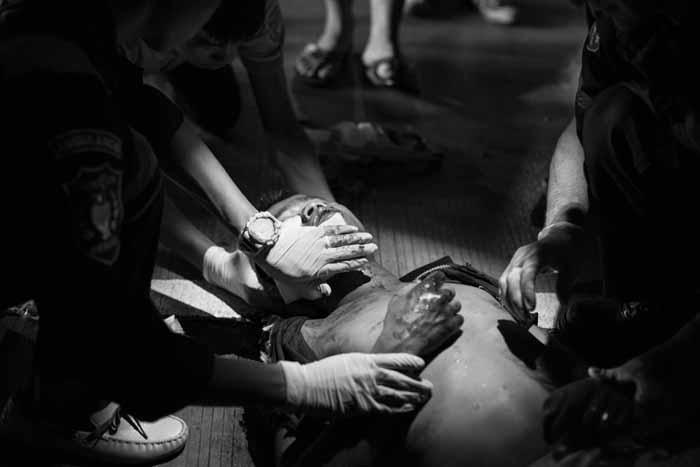
Team members clean the wounds of the motorcyclist while preparing him for the ambulance.
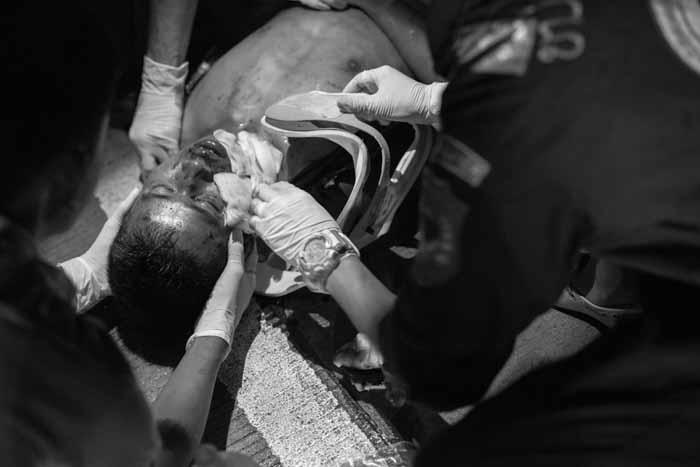
Leeming applies a neck brace to immobilise the man’s head and neck.
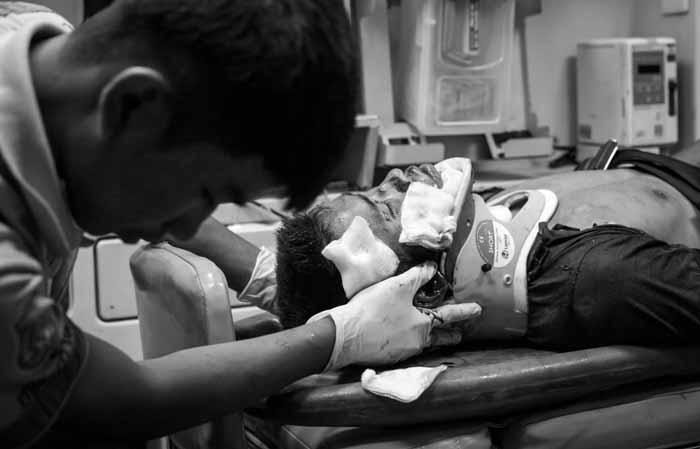
Inside the ambulance, a team member watches over the man as we head for Vientiane’s Setthathirath Hospital.
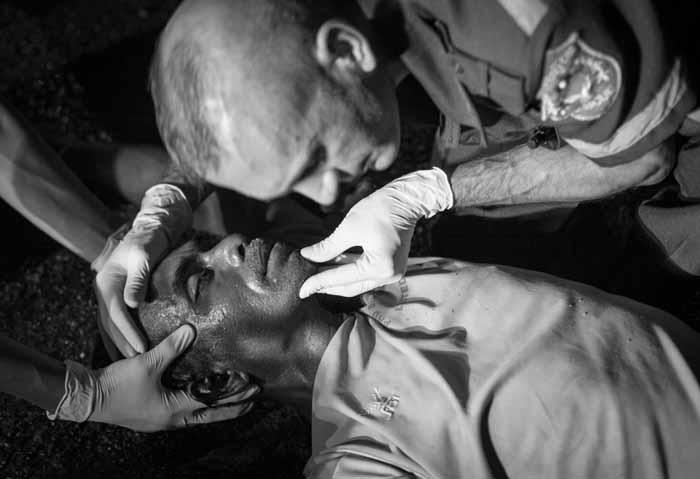
Perret assesses the injuries of one of two men found unconscious in the middle of a major road junction. They appear to
have been travelling on a single crashed scooter.
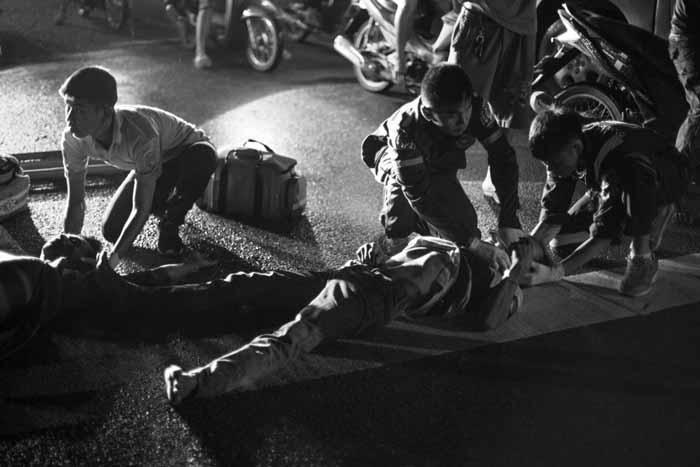
Vientiane Rescue volunteers attend to the men while stretchers are fetched from ambulances.
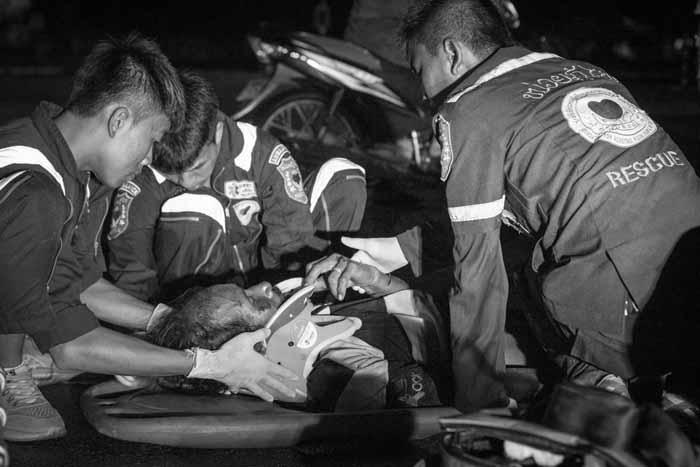
One of the men, now conscious, is prepared for emergency transportation to hospital.
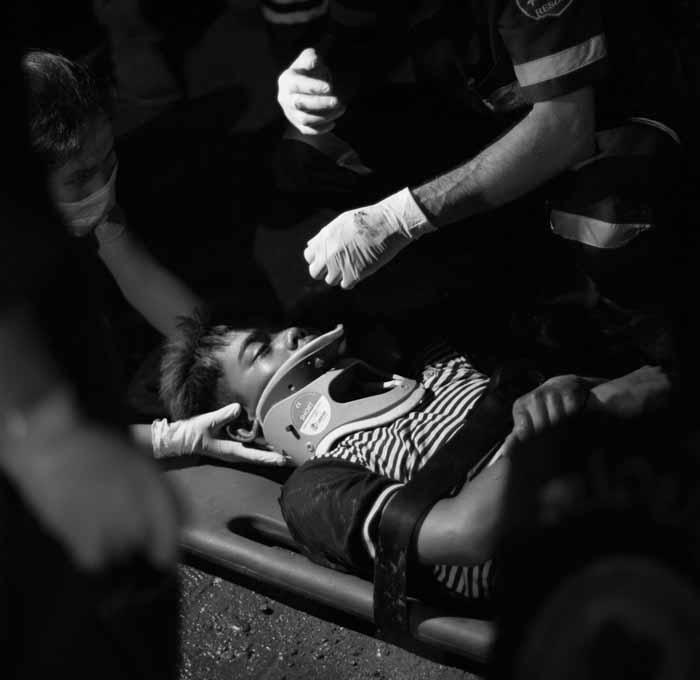
Volunteers, including Nid (left), a 22-year-old accountant by day, stabilise a motorcyclist following a head-on collision. The
man has a fractured left femur. He was losing blood rapidly when the team arrived.
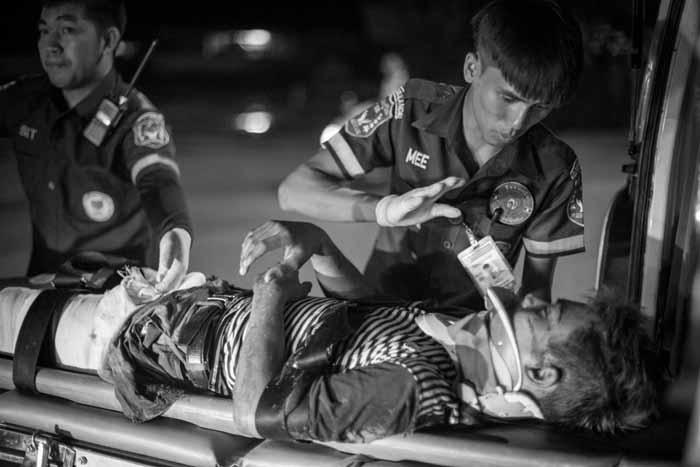
The man is slid into the back of the ambulance. He was urgently treated where he lay in the road, stemming the flow of
blood and, says Perret, likely saving his life.
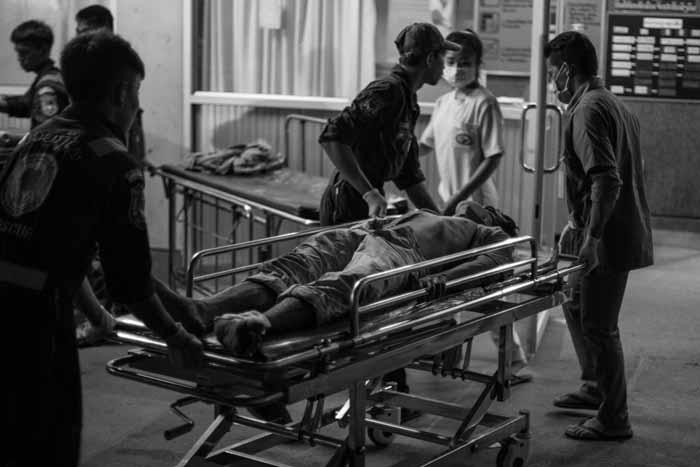
An injured motorcyclist is wheeled into Setthathirath Hospital.
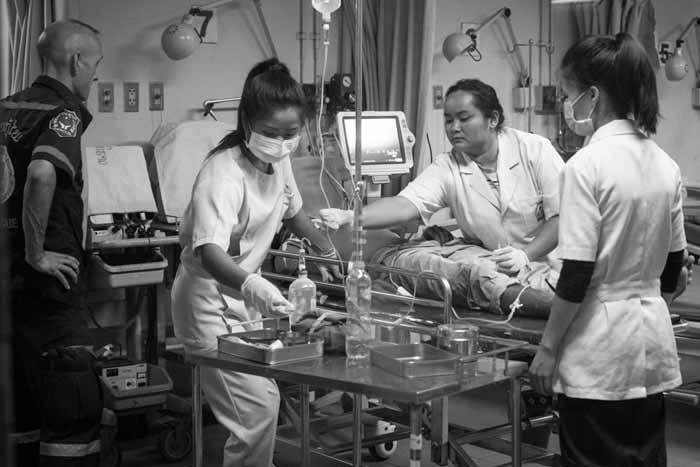
Perret watches as hospital staff treat the unconscious man.
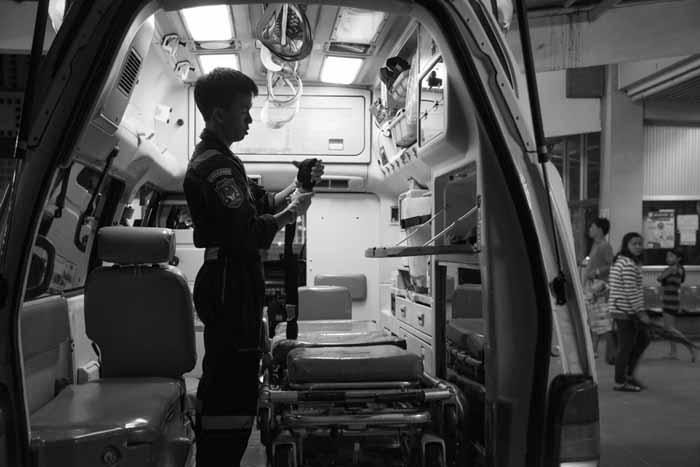
Leeming cleans and readies the ambulance while it waits outside the hospital.
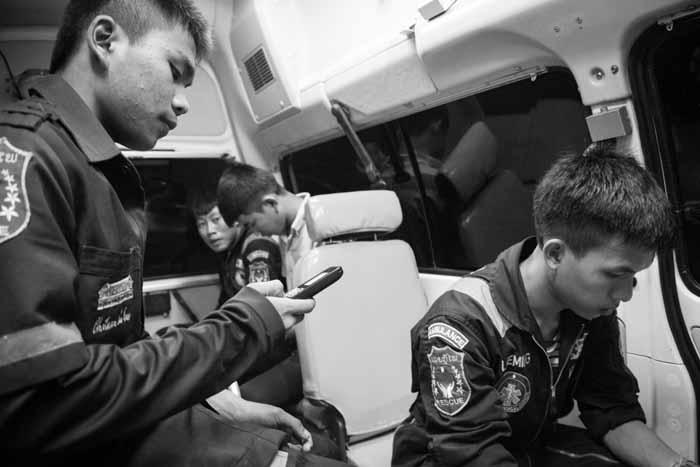

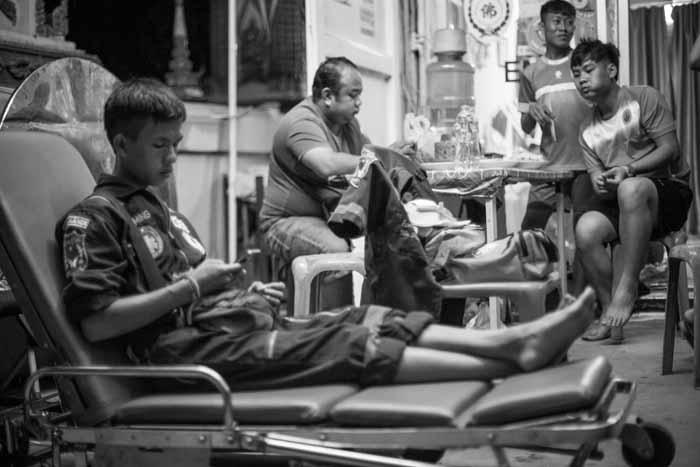
Leeming (right) and young colleagues in the back of the ambulance as it returns to the Vientiane Rescue response
station.
Leeming relaxes on a wheeled gurney, messaging friends on his phone, while waiting for the next emergency.










